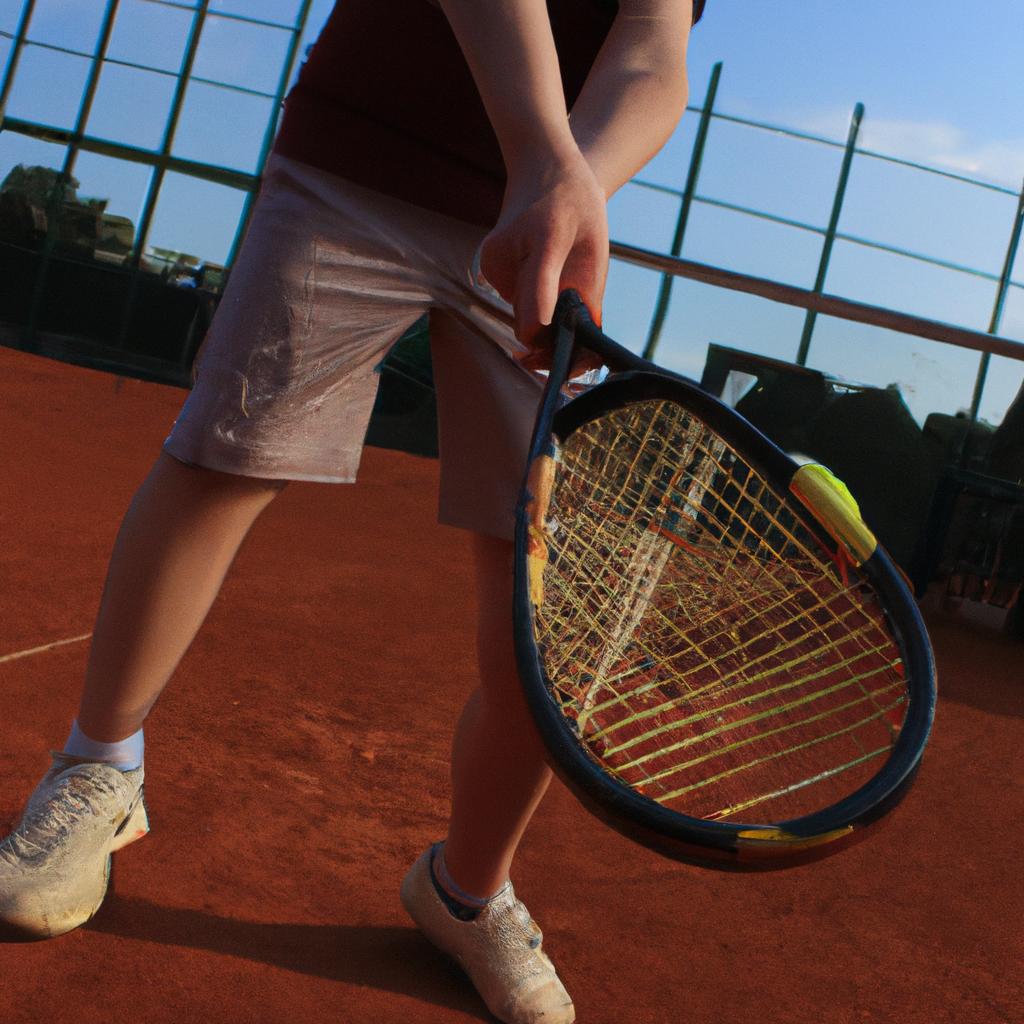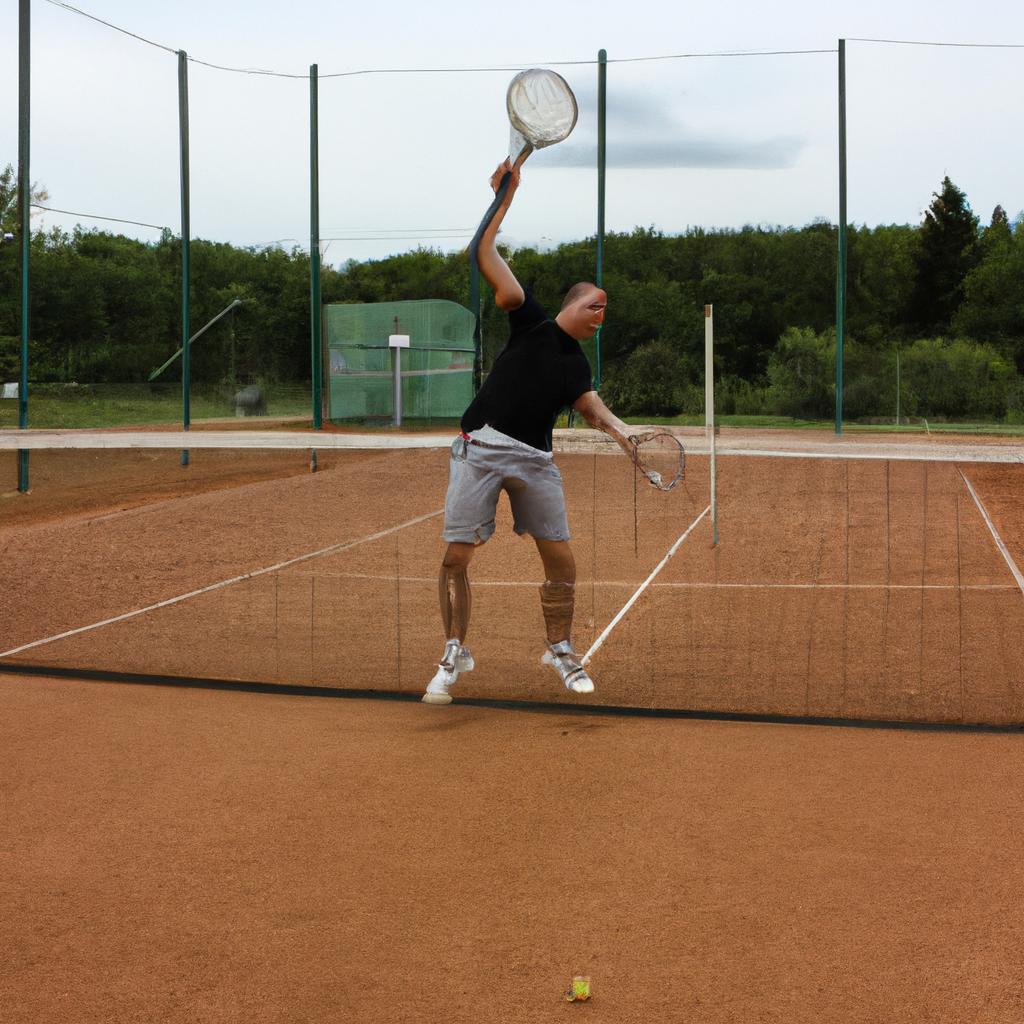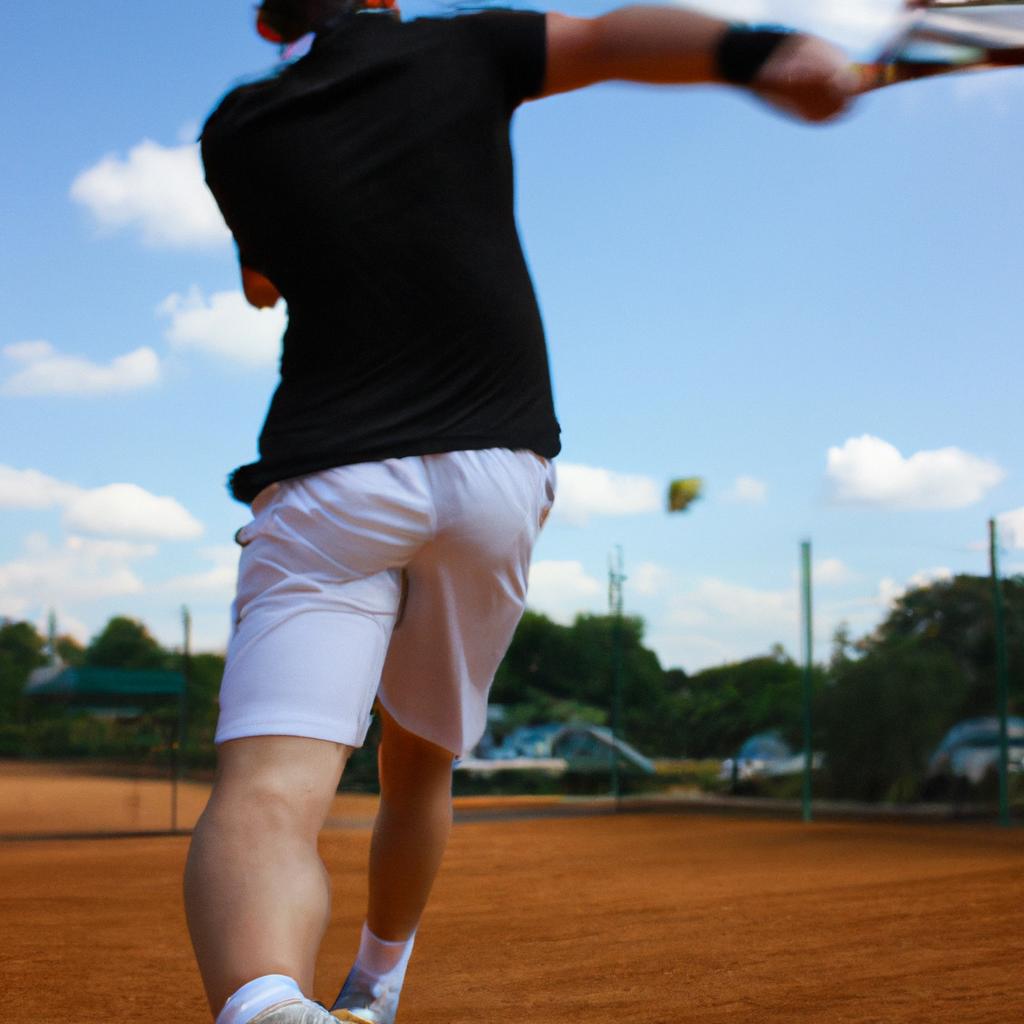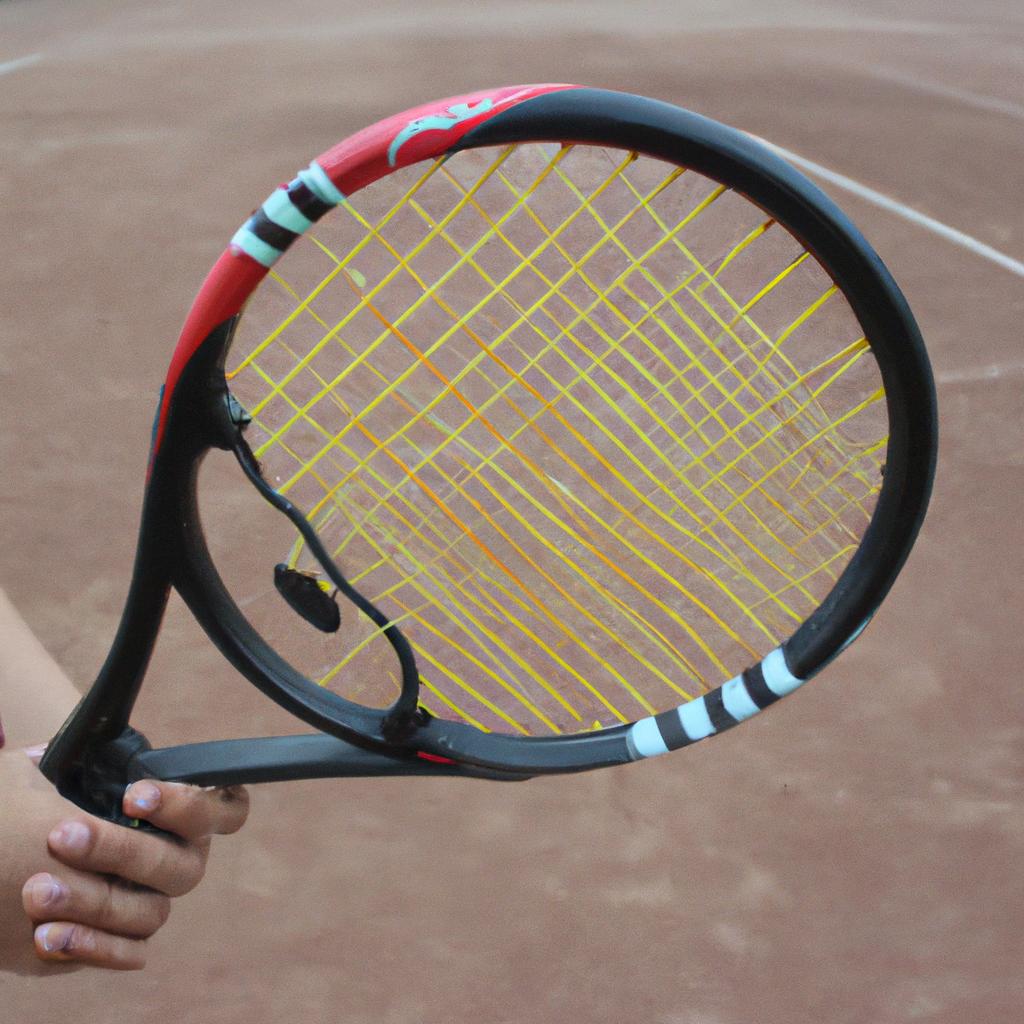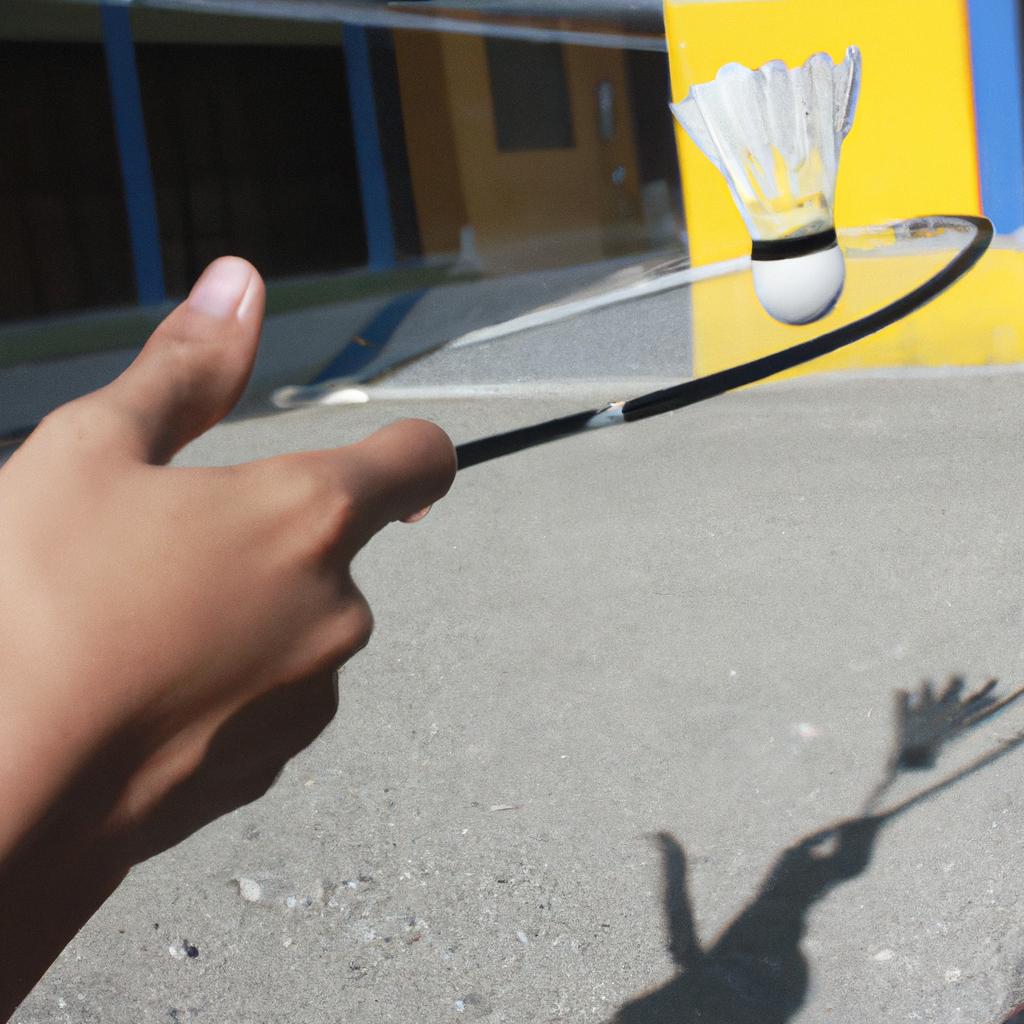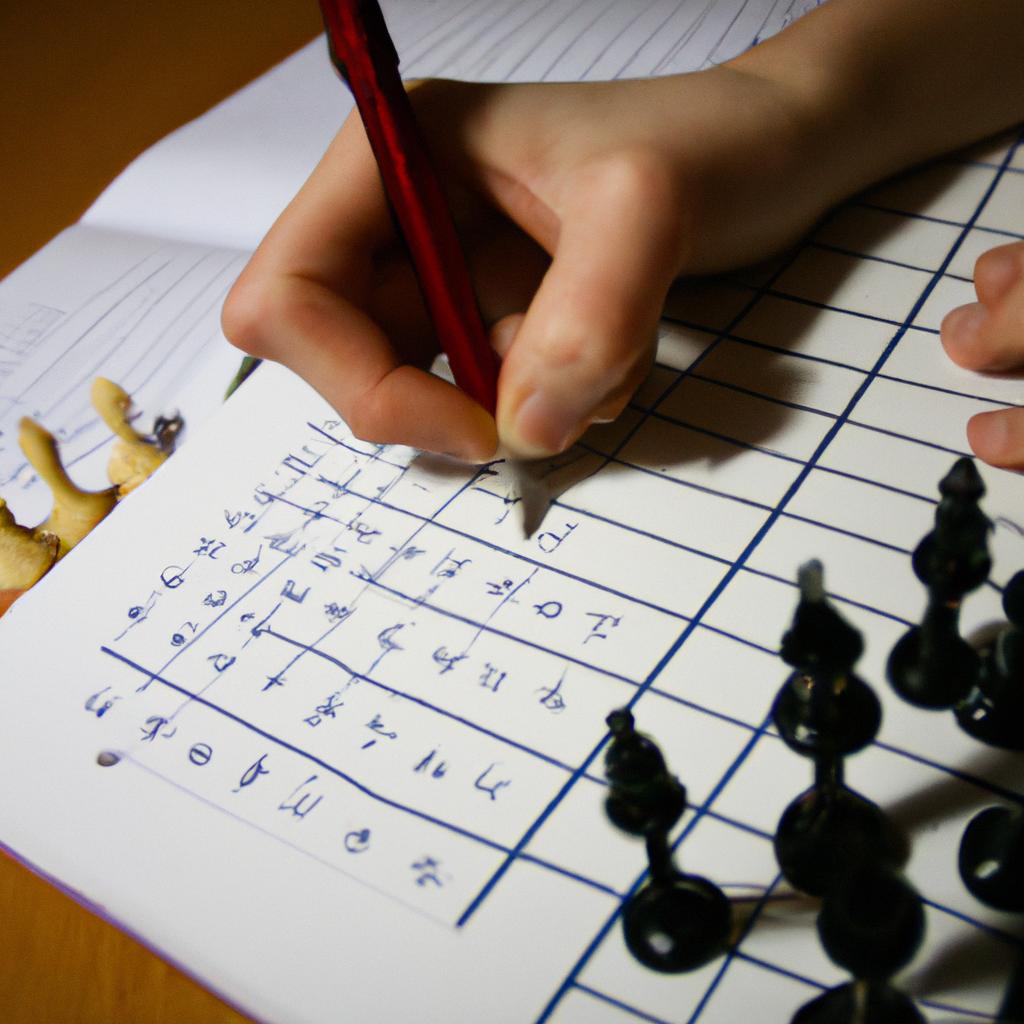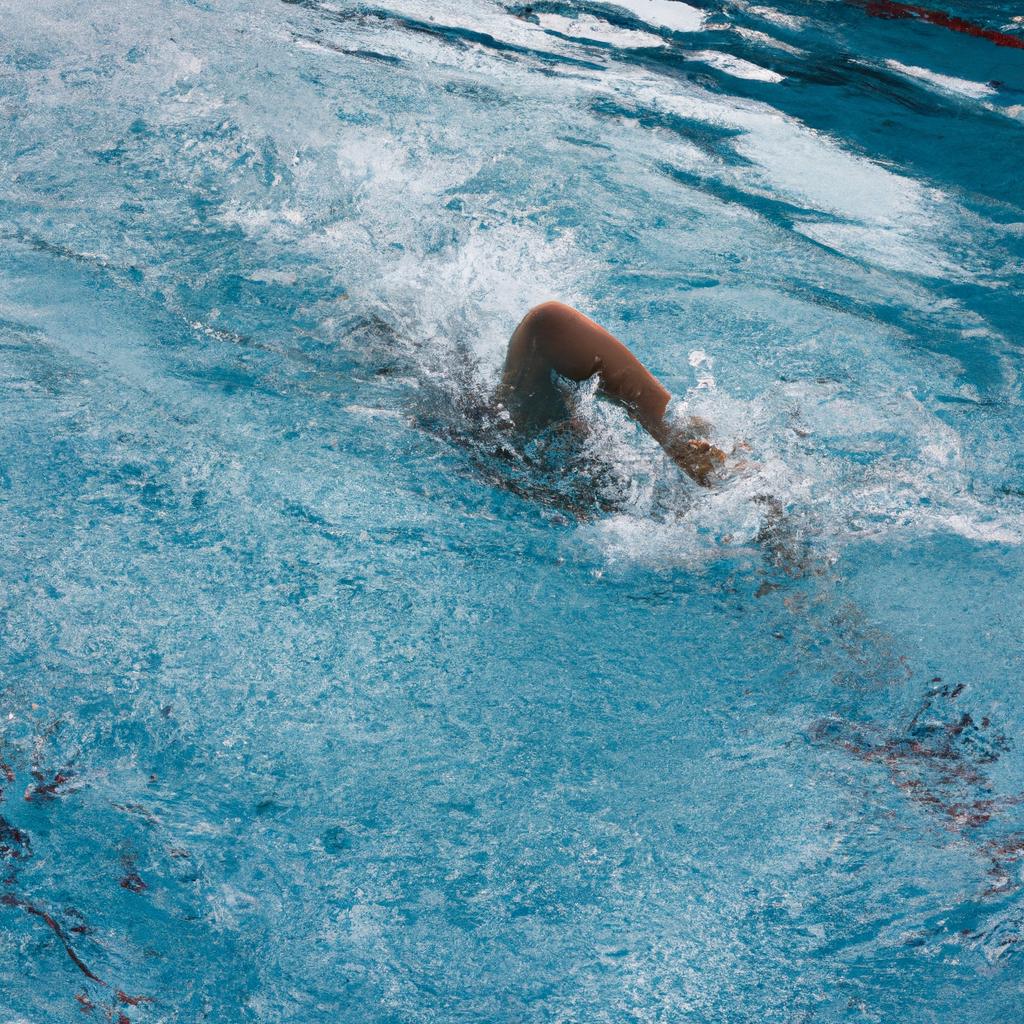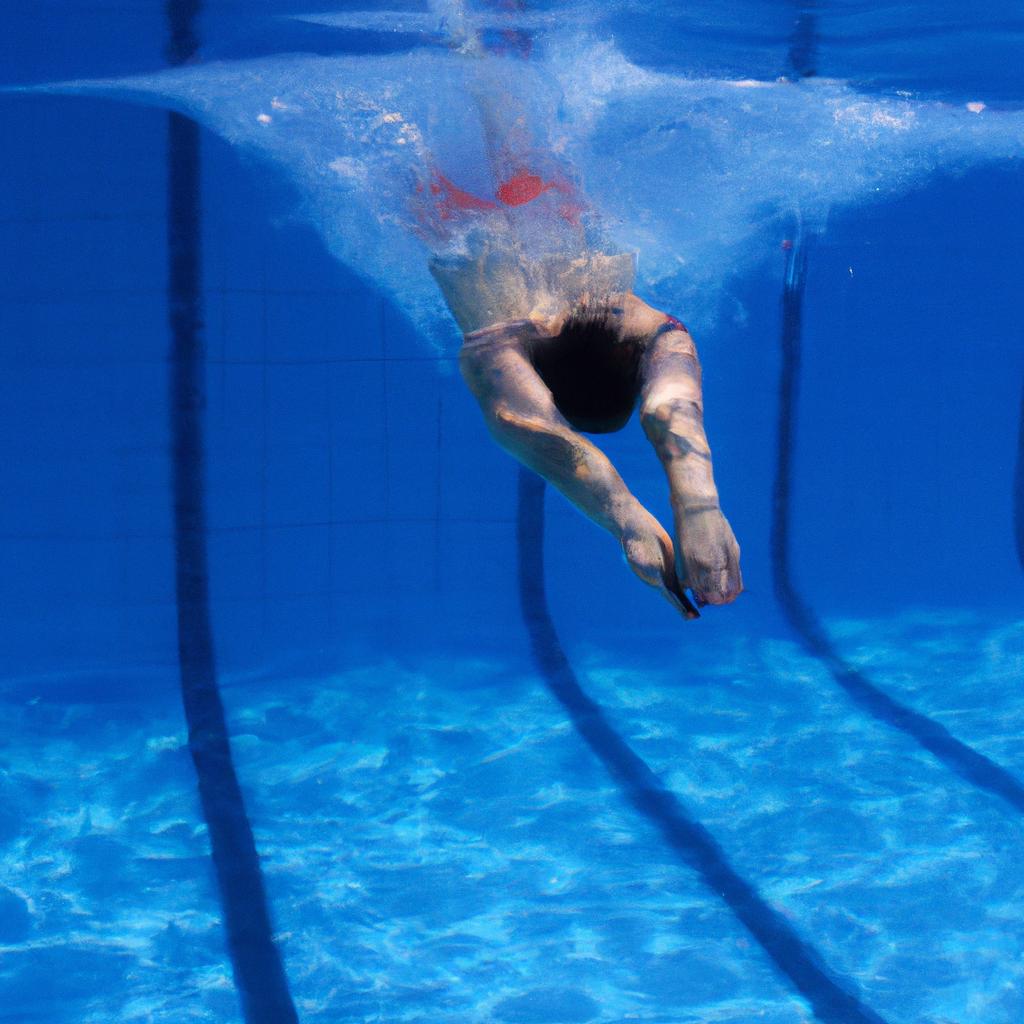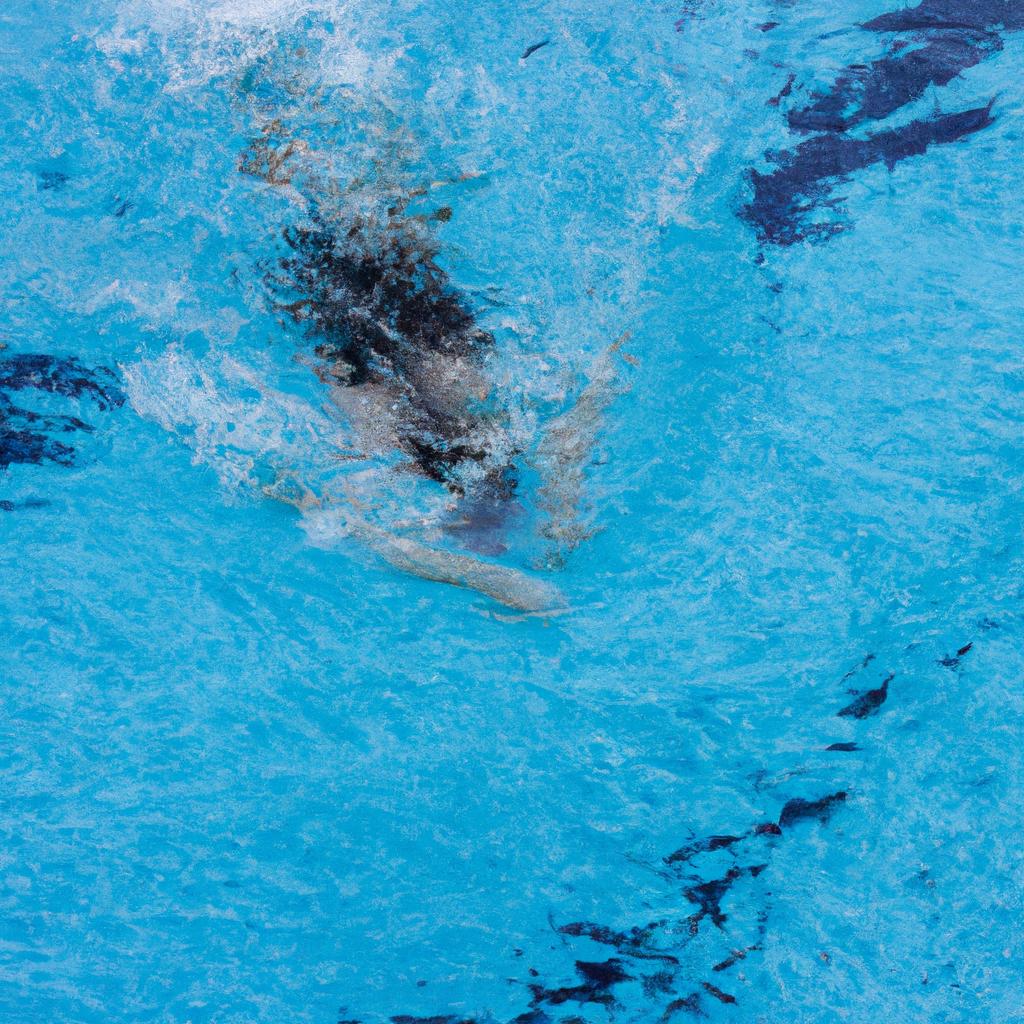In the realm of games and sports, tennis stands as a prominent example of an activity that combines physical prowess with strategic thinking. The objective is simple: players must strike a ball over a net and into the opponent’s court, aiming to score points while preventing their adversary from doing so. To delve deeper into the intricacies of this dynamic sport, it becomes imperative to explore its basic rules and regulations.
For instance, imagine a hypothetical scenario where two skilled tennis players face off on a bright summer afternoon. As they step onto the court, both athletes grip their rackets tightly, ready to engage in a battle of agility and precision. Little do they know that behind their every move lies a set of fundamental principles that governs the game. From understanding how serving rotation works to grasping concepts like love-15 scoring system or deuce advantage rule, comprehending these foundational rules serves as a vital stepping stone towards becoming adept at playing tennis. In this article, we will unravel the essential guidelines that form the backbone of this exhilarating sport, shedding light on key aspects such as equipment requirements, scoring methods, and gameplay mechanics. Through acquiring knowledge about these basic rules, aspiring tennis enthusiasts can enhance their understanding and appreciation for this captivating game.
Equipment needed for playing
To fully engage in the game of tennis, players require specific equipment to ensure a fair and competitive match. One example that highlights the importance of proper equipment is illustrated by the case study of John, an aspiring tennis player who initially used borrowed racquets and worn-out tennis balls. His lack of suitable gear hindered his progress and limited his ability to develop essential skills.
The first item on the list of necessary equipment is a tennis racquet. These racquets are specifically designed with lightweight materials such as graphite or aluminum, providing players with optimal control and power during their shots. The grip size should be chosen based on individual preference, ensuring comfort and maneuverability for each player.
Alongside a racquet, tennis players require tennis balls. Standardized yellow balls made from rubber are commonly used in professional matches due to their consistent bounce characteristics. It is crucial to replace these balls regularly since they tend to lose pressure over time, affecting their performance during play.
Additionally, appropriate footwear plays a vital role in preventing injuries and enhancing movement efficiency on the court. Tennis shoes feature sturdy soles that provide excellent traction while allowing quick lateral movements required during gameplay. Wearing comfortable socks can also minimize blisters caused by prolonged physical activity.
Lastly, players should consider wearing suitable clothing that allows freedom of movement without causing discomfort or restricting range of motion. Breathable fabrics like polyester blends are commonly preferred as they absorb sweat efficiently, keeping players dry throughout intense matches.
In summary, acquiring the correct equipment significantly contributes to a successful tennis experience. A well-chosen racquet, properly pressurized balls, supportive footwear, and comfortable attire enable players like John to perform optimally on the court.
Moving forward into examining the scoring system in tennis…
Scoring system in tennis
From the equipment needed for playing tennis, let us now explore the scoring system in this sport. To better understand how points are awarded, consider the following example: In a singles match between players A and B, player A serves first. The ball is hit back and forth until one player fails to return it successfully over the net or hits it out of bounds. If player B fails to return player A’s serve, then player A earns a point.
The scoring system in tennis follows a unique pattern that can be confusing for beginners. However, once understood, it becomes an integral part of the game. Here are some key aspects of the scoring system:
- Points: Tennis uses a numerical format where each successful shot results in earning points. The sequence starts with “Love” (meaning zero), followed by 15, then 30, and finally 40. When a player reaches 40 points and wins another rally, they win the game.
- Deuce: When both players reach 40 points simultaneously, it is called deuce. From deuce, a player must win two consecutive points to secure the game.
- Advantage-In/Out: If one player wins a point after deuce but before securing two consecutive points, they gain advantage-in/out. This means that if they win the next point as well, they will win the game; otherwise, it goes back to deuce.
- Set and Match: Matches consist of sets which are made up of games. Usually, matches are best-of-three sets for women’s singles and doubles events and best-of-five sets for men’s singles and doubles events.
To illustrate these concepts further:
| Player | Game Score |
|---|---|
| Player A | Love-15 |
| Player B | 15-15 |
| Player B | 15-30 |
| Player B | 15-40 |
| Player A | 30-40 |
| Player A | Deuce |
| Player B | Advantage |
| Player A | Deuce |
| Player B | Advantage |
| Player B | Game |
In this example, player B wins the game after going through deuce and advantage points.
Understanding the scoring system is crucial for players to keep track of their progress during a tennis match. It adds an element of excitement and strategy as players aim to earn points while navigating through deuces and advantages.
Basic rules of serving
Transitioning from the previous section on the scoring system in tennis, let’s now delve into the fundamental rules that govern the game. To illustrate these rules, let’s consider a hypothetical scenario where two players are engaged in a competitive singles match.
First and foremost, one key rule in tennis is that each player must start by serving the ball into their opponent’s court. The server has two attempts to successfully complete a legal serve; failure to do so results in a fault. However, if both serves go out of bounds or fail to land within the specified service box, it leads to a double fault and an automatic point for the opposing player.
Once the ball is served successfully, players engage in rallies by hitting shots back and forth across the net. Here are some important guidelines that players must adhere to during play:
- Players must allow balls hit by their opponent to bounce once before returning them.
- The ball can be struck with any part of the racket as long as it falls within certain boundaries.
- Shots landing outside of designated lines (including those at the baseline and sidelines) result in points awarded to the opposing player.
- It is crucial for players to remain inside their respective baselines while serving and receiving throughout each point.
To highlight these rules further, here’s a breakdown of how they apply using a table format:
| Rule | Description |
|---|---|
| Allow bounce | Players must wait for the ball to bounce before returning it |
| Legal striking area | Any part of the racket may be used within specified boundaries |
| Out-of-bounds shot | Balls landing outside designated lines award points |
| Baseline limitations | Players stay inside baselines when serving and receiving |
By adhering to these basic rules, players ensure fair competition and maintain consistency throughout matches. Understanding these principles allows participants to effectively strategize their gameplay and showcase their skills. In the subsequent section, we will explore the specific rules for singles matches.
Transitioning into the next section about “Rules for singles match,” players can further enhance their understanding of tennis regulations through more detailed guidelines.
Rules for singles match
Having understood the basic rules of serving in tennis, let us now delve into the rules that govern a singles match. By examining these guidelines, we can gain a comprehensive understanding of how to play this thrilling game effectively.
Rules for Singles Match
To better comprehend the intricacies of a singles match in tennis, consider the following example scenario: Imagine two skilled players engaging in an intense battle on the court. With each rally, they showcase their agility, strategy, and precision as they strive to outplay one another. Now, let’s explore the specific regulations that shape such matches:
-
Scoring System:
In tennis, scoring follows a unique system known as “Love,” “Fifteen,” “Thirty,” and “Forty.” Unlike traditional numerical sequences, this system adds an element of curiosity and suspense during gameplay. The player must win four points to secure a game; however, if both competitors reach three points (“Forty-Forty” or “Deuce”), they enter into a situation called “Advantage.” -
Service Order:
Determining who serves first greatly impacts the dynamics of a singles match. Prior to commencing play, players typically engage in a coin toss or other fair means to decide who will serve initially. Afterward, service alternates between opponents after every odd-numbered game throughout the match. -
Court Etiquette:
Maintaining proper decorum is crucial when playing tennis at any level. Players are expected to adhere to certain etiquette standards while competing in singles matches. These include not crossing over onto your opponent’s side during rallies or intentionally distracting them through excessive noise or movement. -
Line Calls:
Accurate line calls are essential for fair play during singles matches. Each player is responsible for making honest judgments regarding whether balls land within or outside the designated boundaries of the court. If there is a disagreement, players can request the assistance of an impartial line umpire or utilize electronic systems for line call verification.
As we conclude our exploration of the rules governing singles matches in tennis, it is important to note that these regulations provide structure and fairness to ensure an enjoyable experience for both players. Understanding these guidelines will allow you to engage more effectively in this captivating sport. In our subsequent section, we will delve into the rules that govern doubles matches, providing further insights into the exciting world of tennis gameplay.
Rules for doubles match
Transitioning from the previous section about the rules for singles matches, let us now delve into the rules governing doubles matches in tennis. To illustrate these rules, consider a hypothetical scenario where two professional teams are competing against each other on a sunny afternoon.
In a doubles match, four players participate, with two players assigned to each team. The court dimensions and net height remain the same as in singles matches. However, there are some key differences in the rules that govern doubles play:
- Service Order: Unlike in singles matches where players alternate serving after every game, in doubles matches, service is rotated between teammates after every point.
- Court Coverage: Each player has their own designated half of the court, divided by an imaginary line running down the middle. Players must stay within their respective halves during rallies unless attempting to return a shot.
- Communication: Effective communication between teammates becomes crucial during doubles play. Players need to coordinate their movements and communicate clearly when deciding who will hit certain shots or cover specific areas of the court.
- Strategy: Doubles matches require strategic positioning and teamwork to maximize success. Teams often employ tactics such as one player moving closer to the net (the “net player”) while their partner stays back near the baseline (the “baseline player”).
Consider this emotional response-evoking bullet-point list:
- Collaborate effectively with your teammate
- Communicate clearly and decisively throughout the match
- Strategize together to exploit opponents’ weaknesses
- Show resilience and support towards your partner
Furthermore, we can present an emotional response-evoking table highlighting essential aspects of successful doubles play:
| Aspect | Importance | Impact | Examples |
|---|---|---|---|
| Communication | High | Coordination | Clear hand signals |
| Net Play | Crucial | Domination | Quick reflexes |
| Shot Placement | Strategic | Control | Deep cross-court shots |
| Court Awareness | Essential | Anticipation | Covering open spaces |
In conclusion, doubles matches in tennis introduce unique dynamics that require effective communication, strategic positioning, and teamwork between partners. By understanding the rules specific to doubles play and employing these strategies effectively, teams can increase their chances of success on the court.
Now let’s explore common fouls in tennis and how they are handled by officials during a match.
Common fouls in tennis
Section H2: Common Fouls in Tennis
Transitioning from the previous section on doubles matches, let’s now explore some of the common fouls that can occur during a game of tennis. To illustrate these fouls, consider the following hypothetical scenario: Lisa and Sarah are playing a singles match, both displaying impressive skills and determination. As they engage in intense rallies, it becomes essential to adhere to the rules to ensure fair play.
In tennis, players must be aware of certain fouls that may result in penalties or loss of points. Here are some common fouls to watch out for:
- Foot Faults: A foot fault occurs when a player steps over the baseline while serving. This violation is often due to an improper stance or lack of awareness during the serve motion.
- Double Bounces: According to the rules, each player must return their opponent’s shot before it bounces twice on their side. Failing to do so results in losing the point.
- Out-of-Bounds Shots: When hitting a ball, it should land within the court boundaries for it to be considered valid. If any part of the ball touches even just one millimeter beyond those lines, it will be deemed out-of-bounds.
- Hindrance: Players should avoid hindering their opponents’ ability to make a shot by making unnecessary movements or noise during a rally. Any intentional interference could lead to penalties.
| Foul Type | Description | Penalty |
|---|---|---|
| Foot Fault | Stepping over the baseline during a serve | Loss of second service |
| Double Bounce | Allowing the ball to bounce twice on your side | Point loss |
| Out-of-Bounds | Ball lands outside court boundaries | Point loss |
| Hindrance | Interfering with opponent’s shot | Point loss or warning |
As we delve deeper into the intricacies of tennis, it is crucial to be aware of these common fouls. By understanding and avoiding them, players can ensure a fair and enjoyable game for both themselves and their opponents. So remember, stay vigilant during your matches, as even the slightest violation could impact the outcome.
Note: It is important to note that in some cases, specific tournament rules may apply regarding penalties for fouls. Therefore, it is advisable to familiarize oneself with any additional regulations before participating in competitive play.

